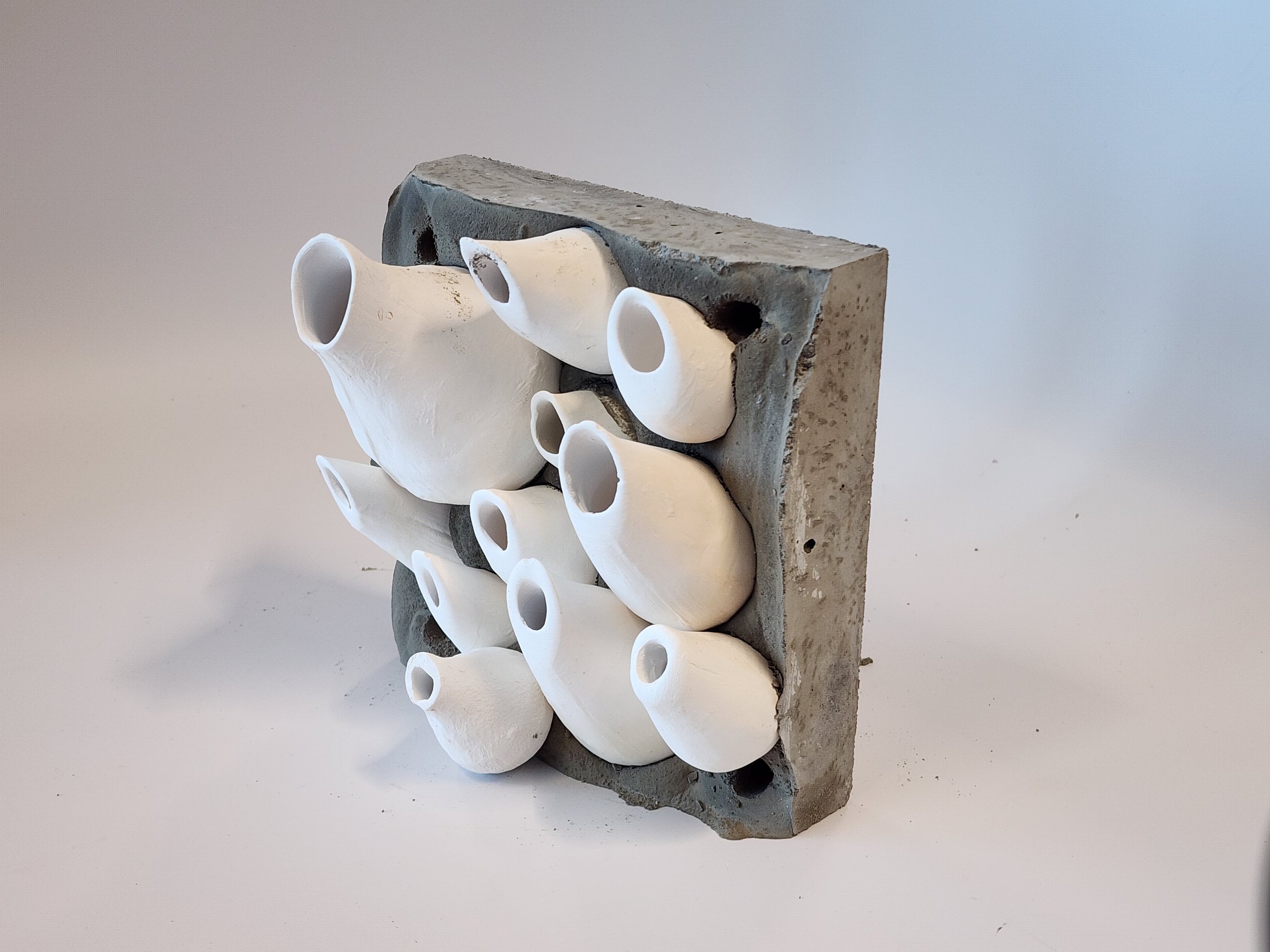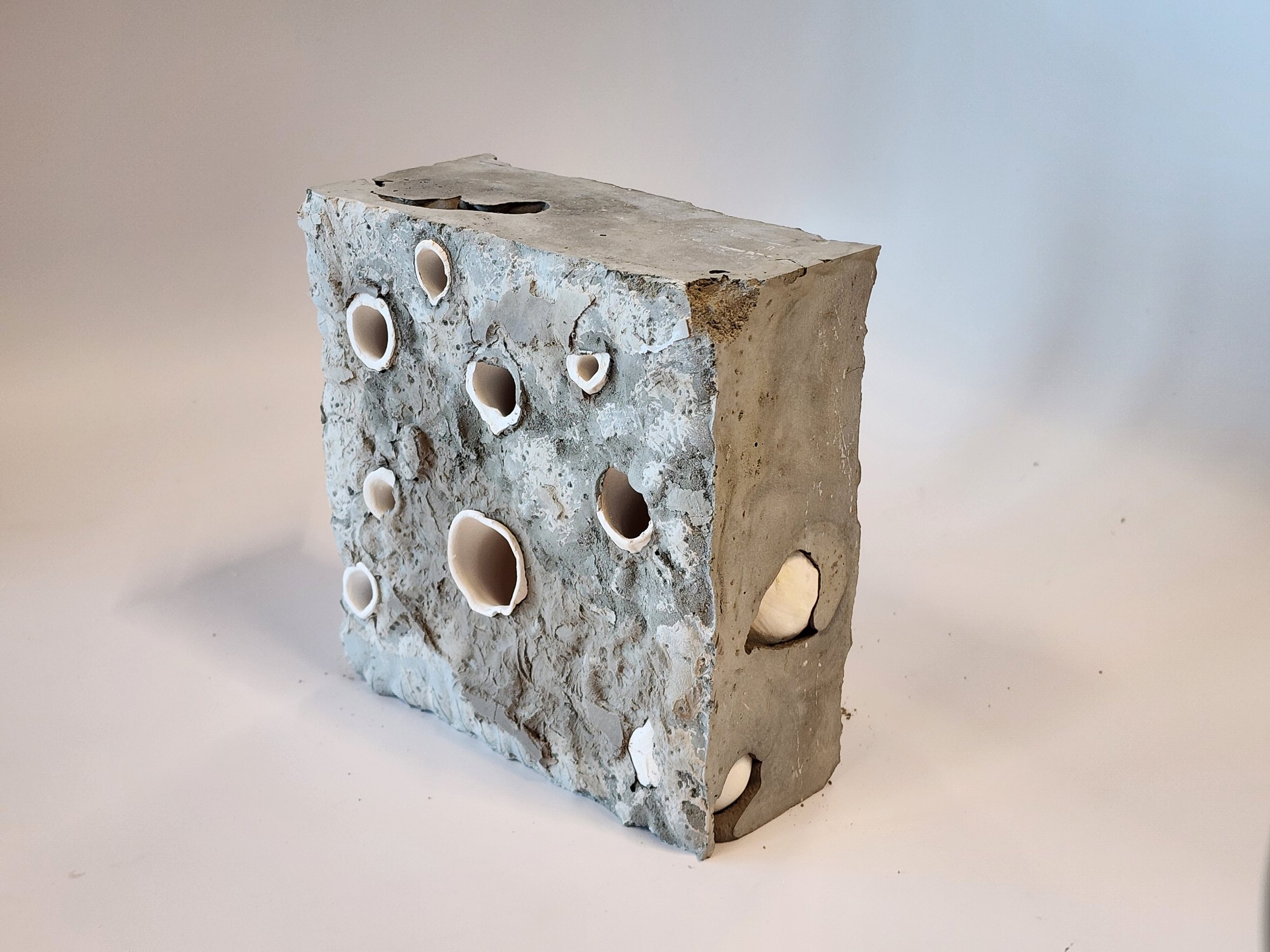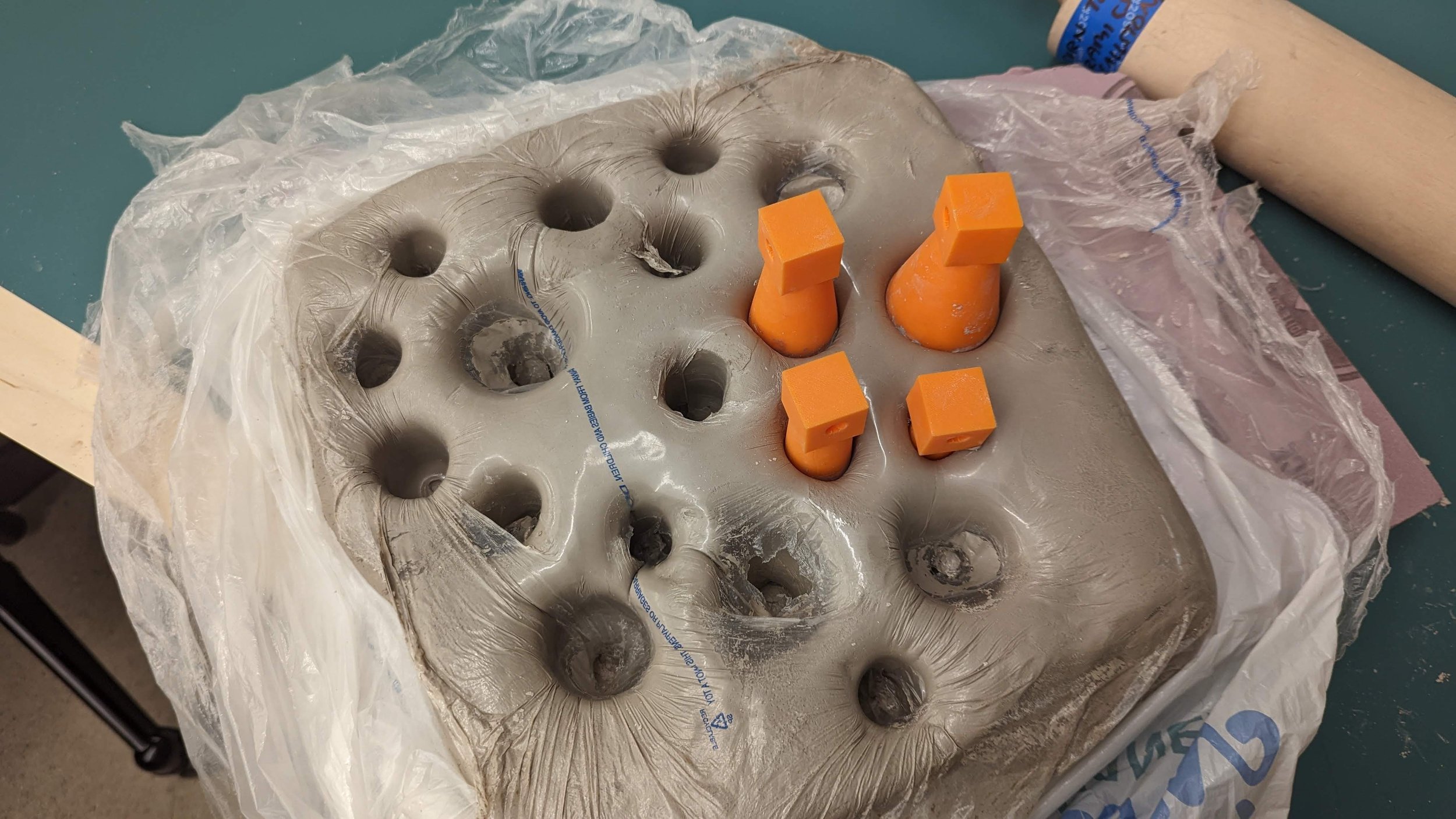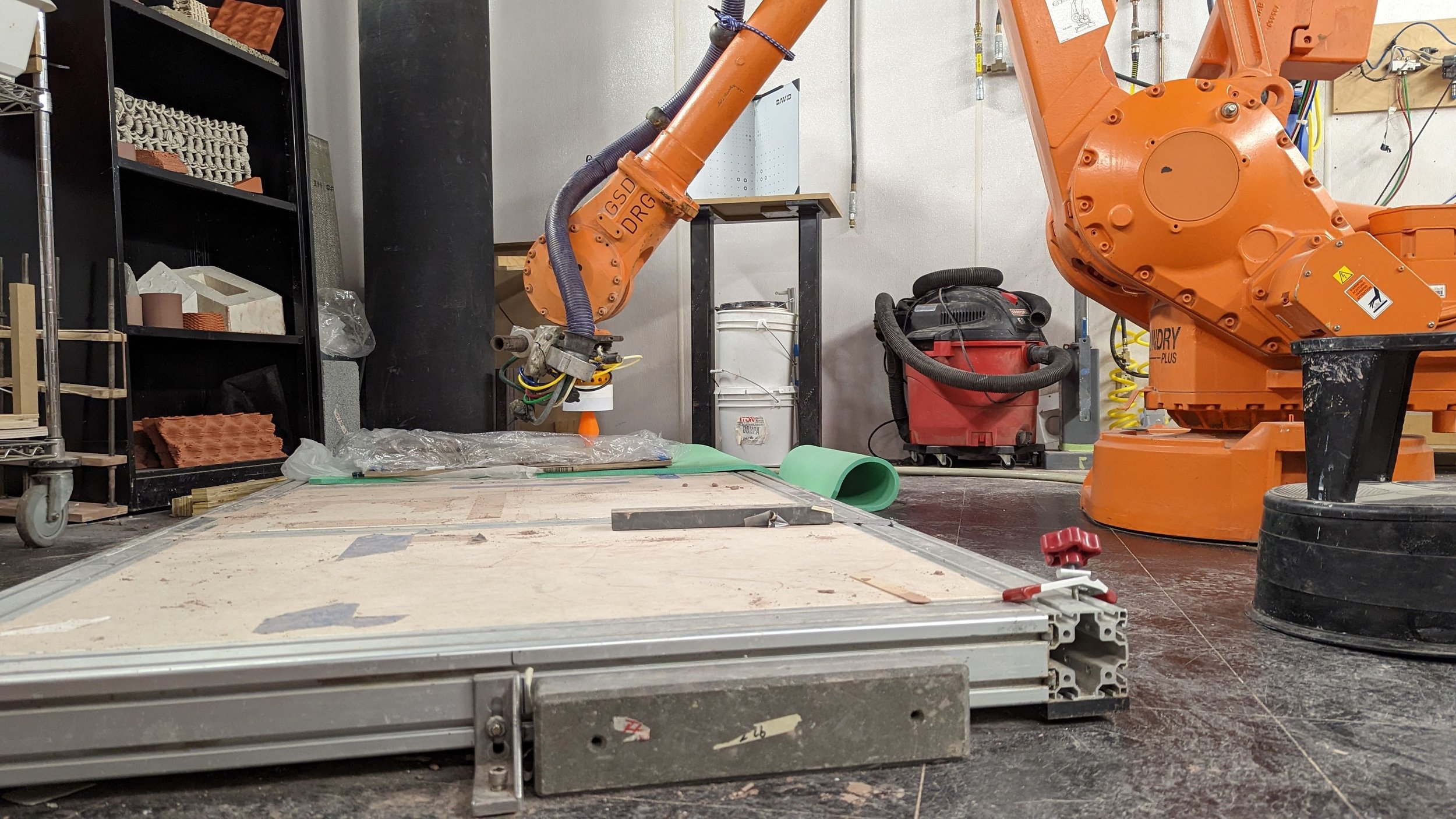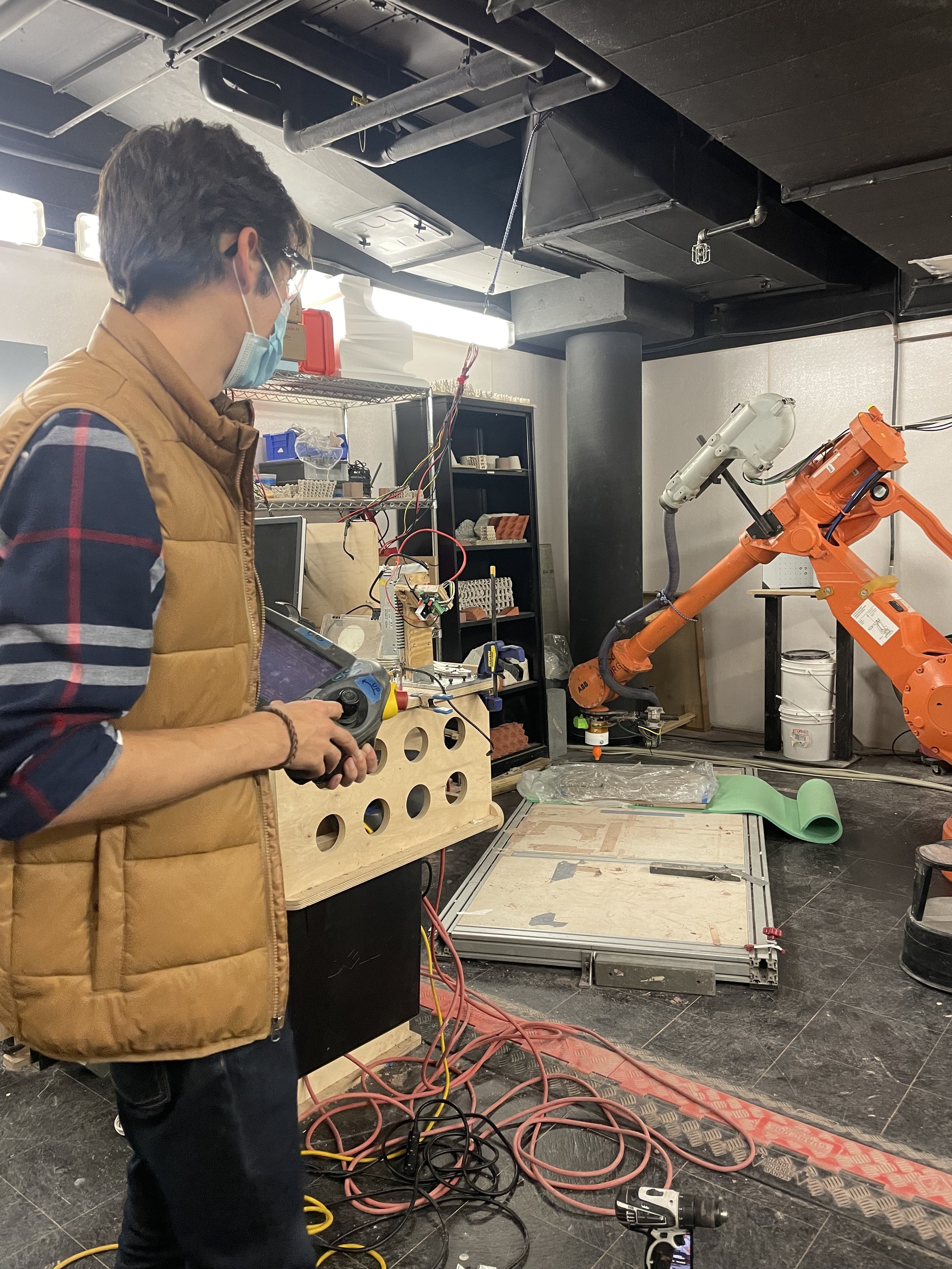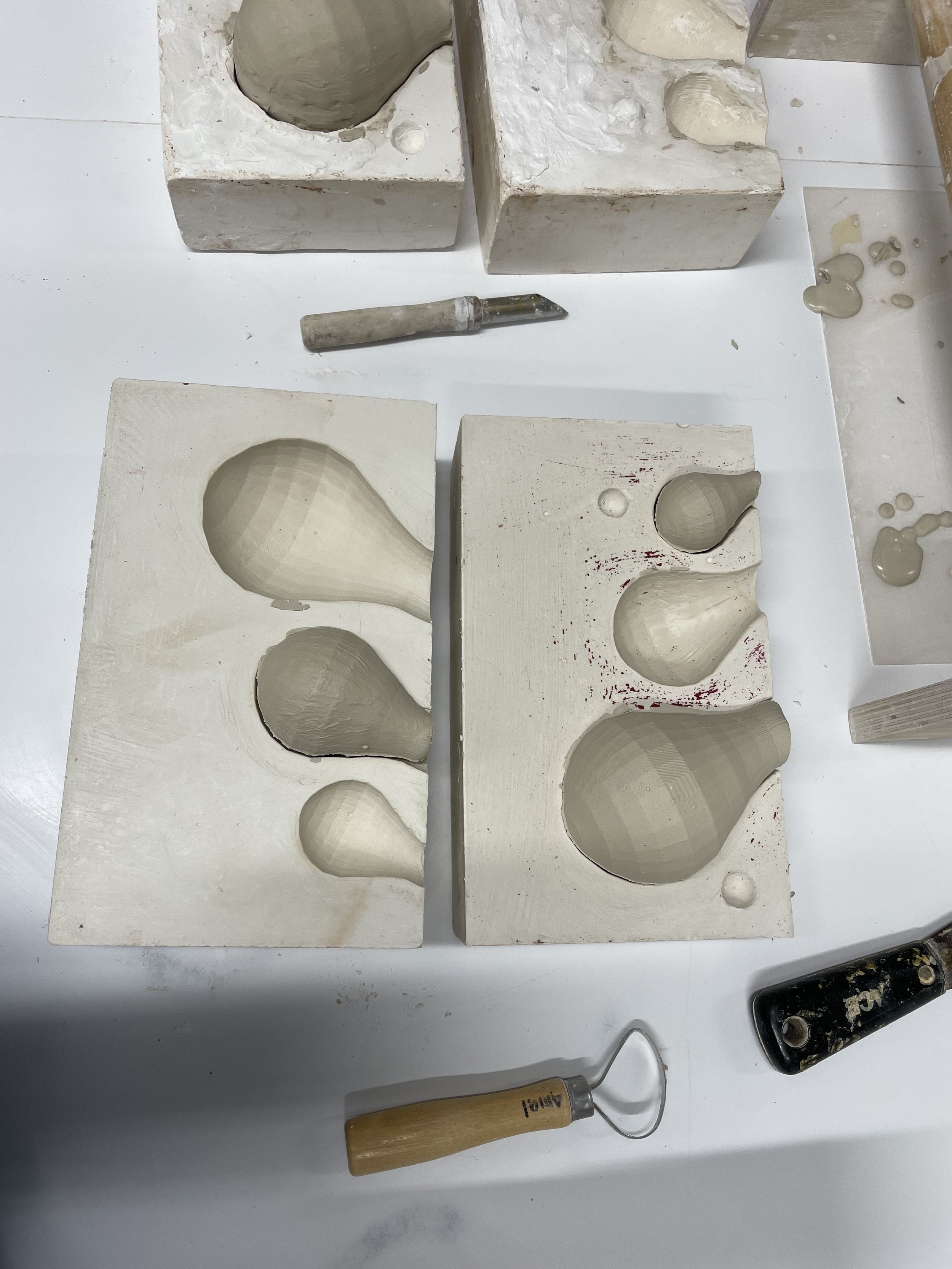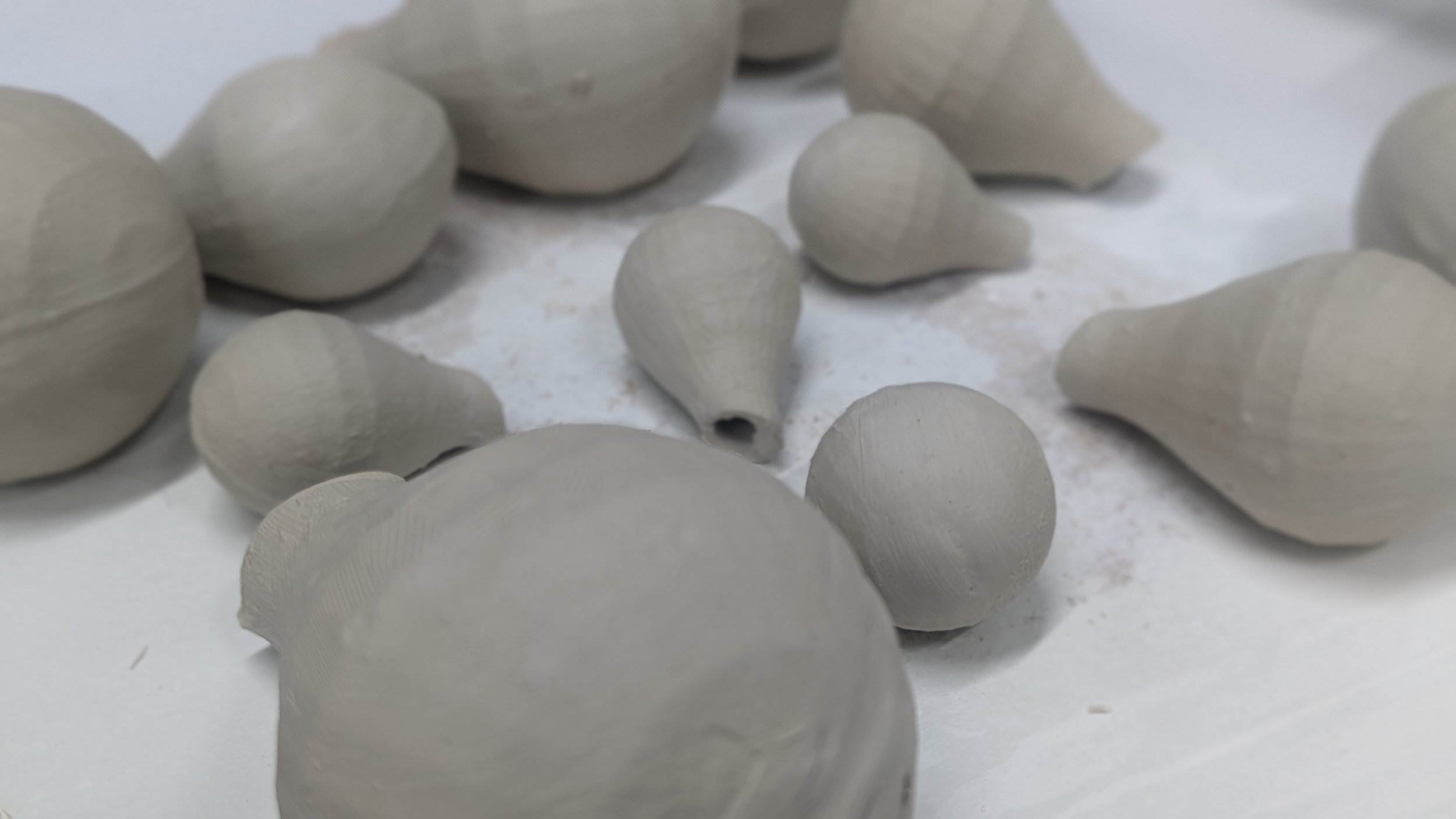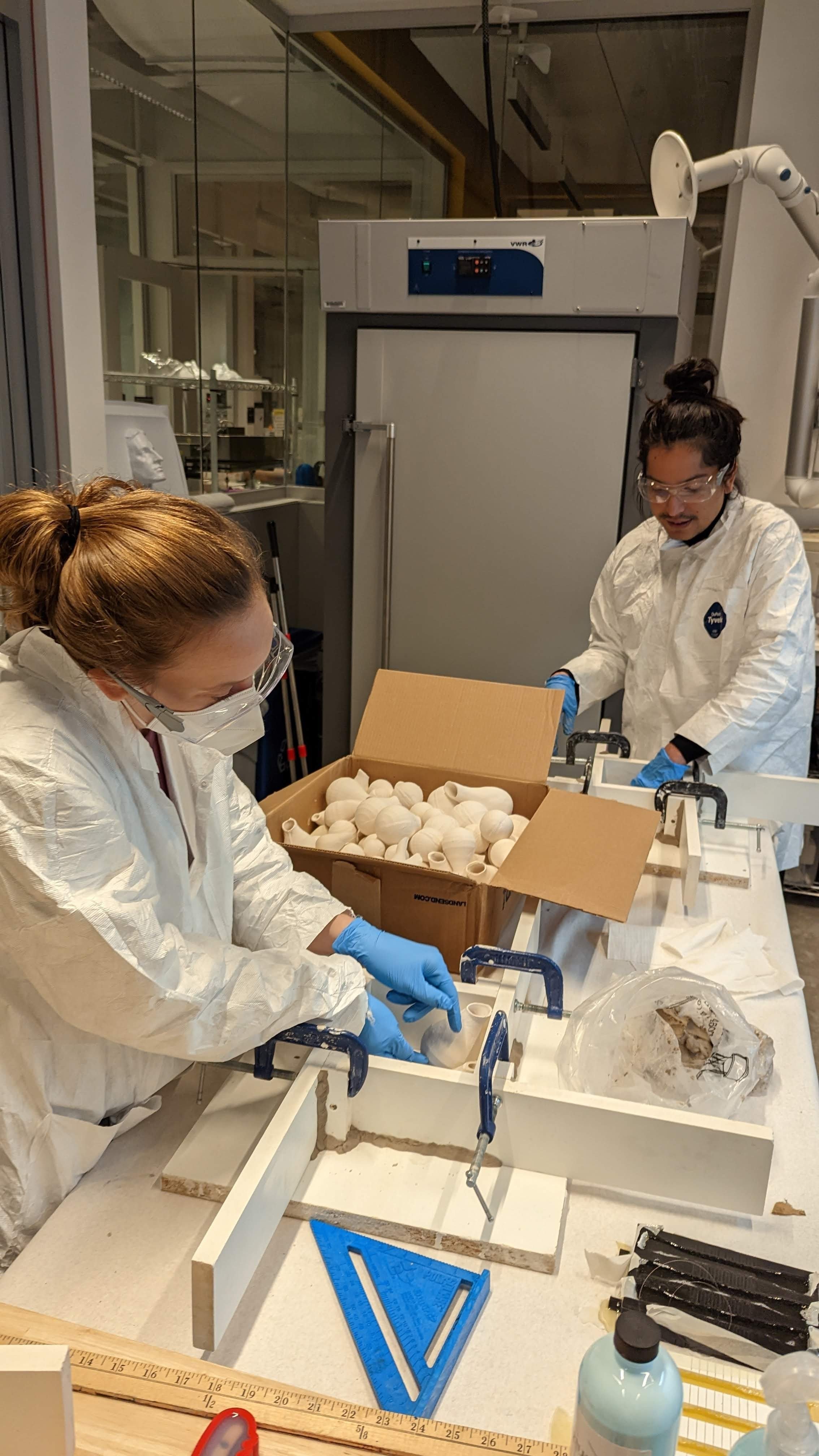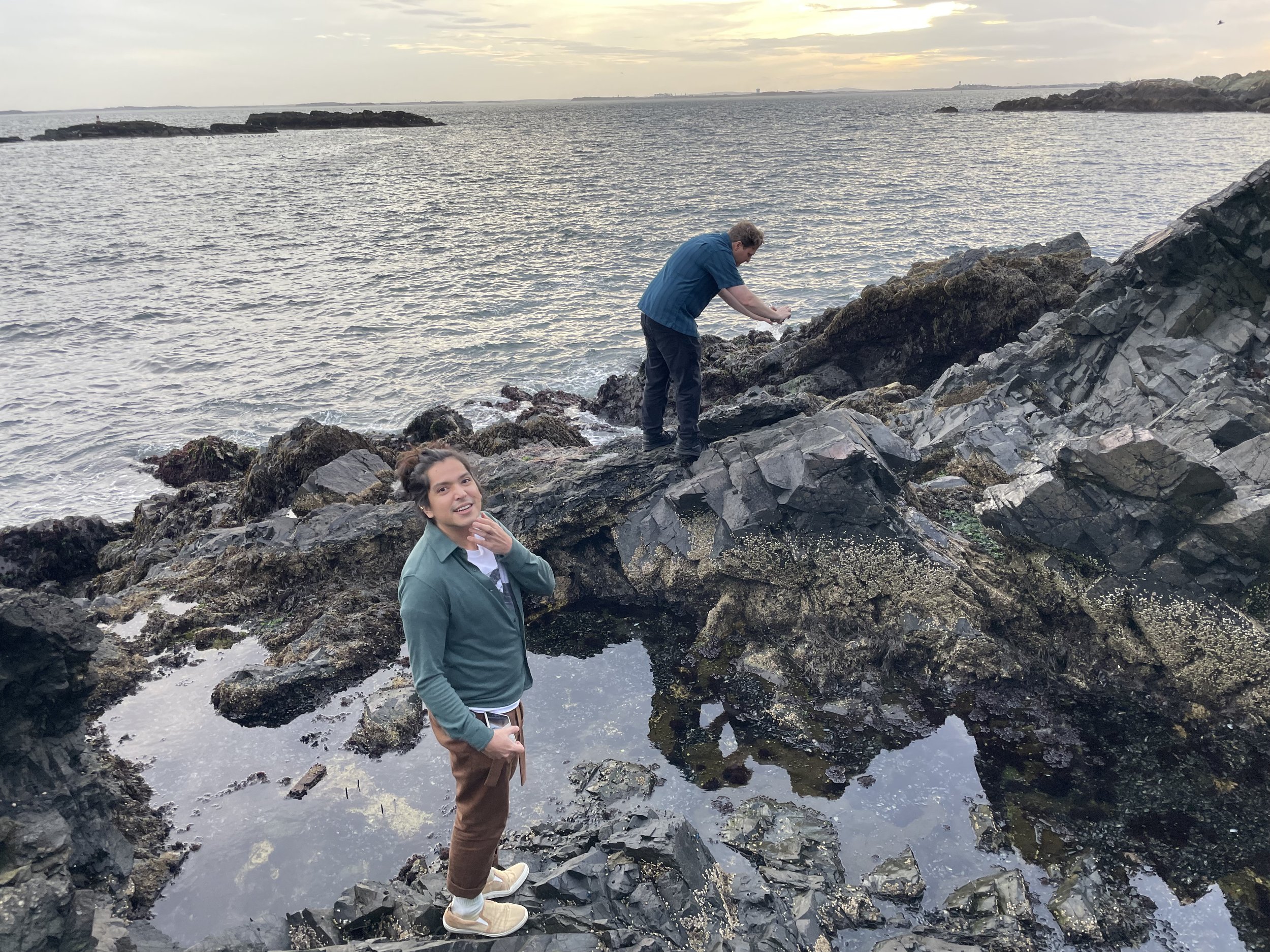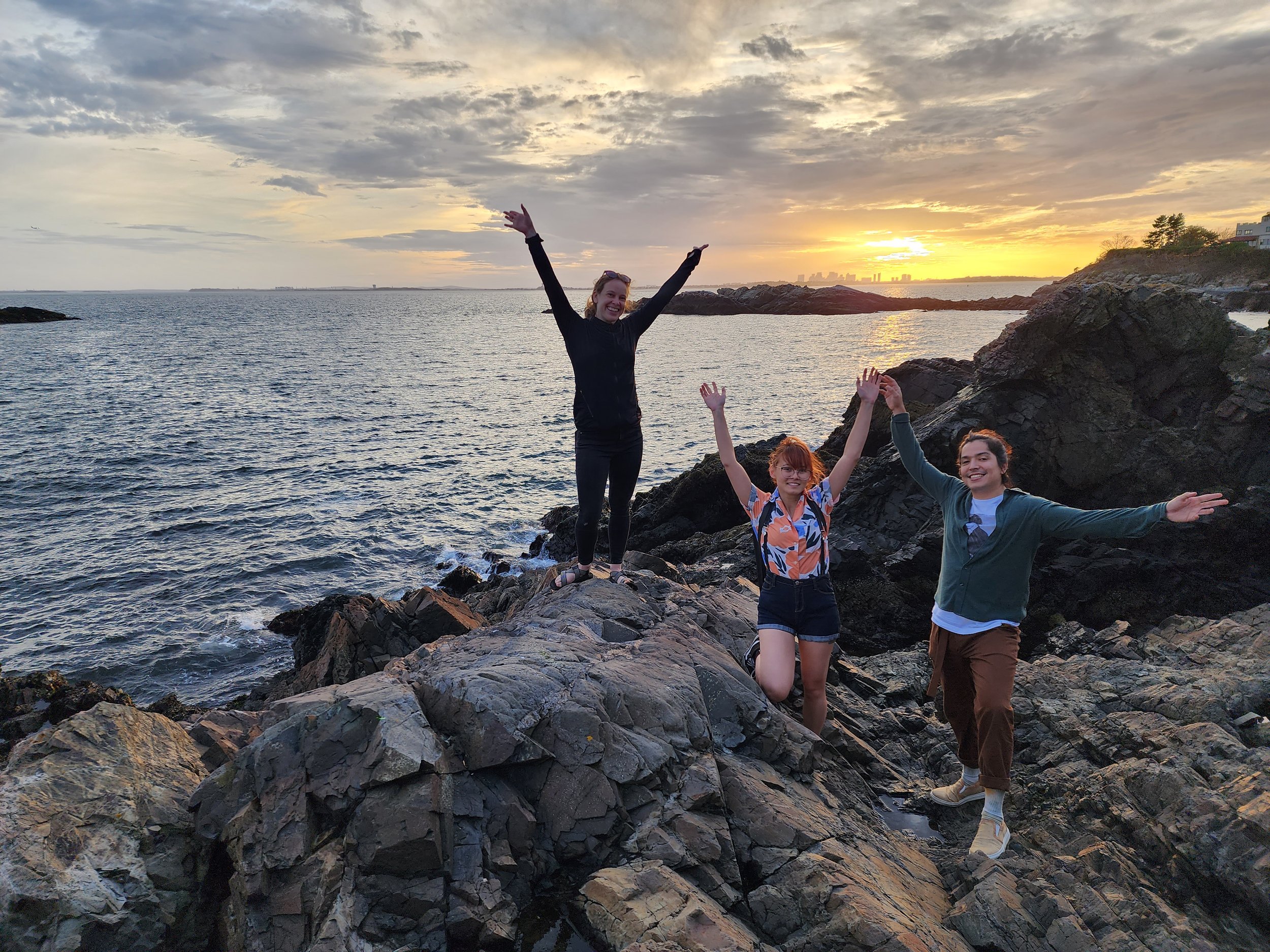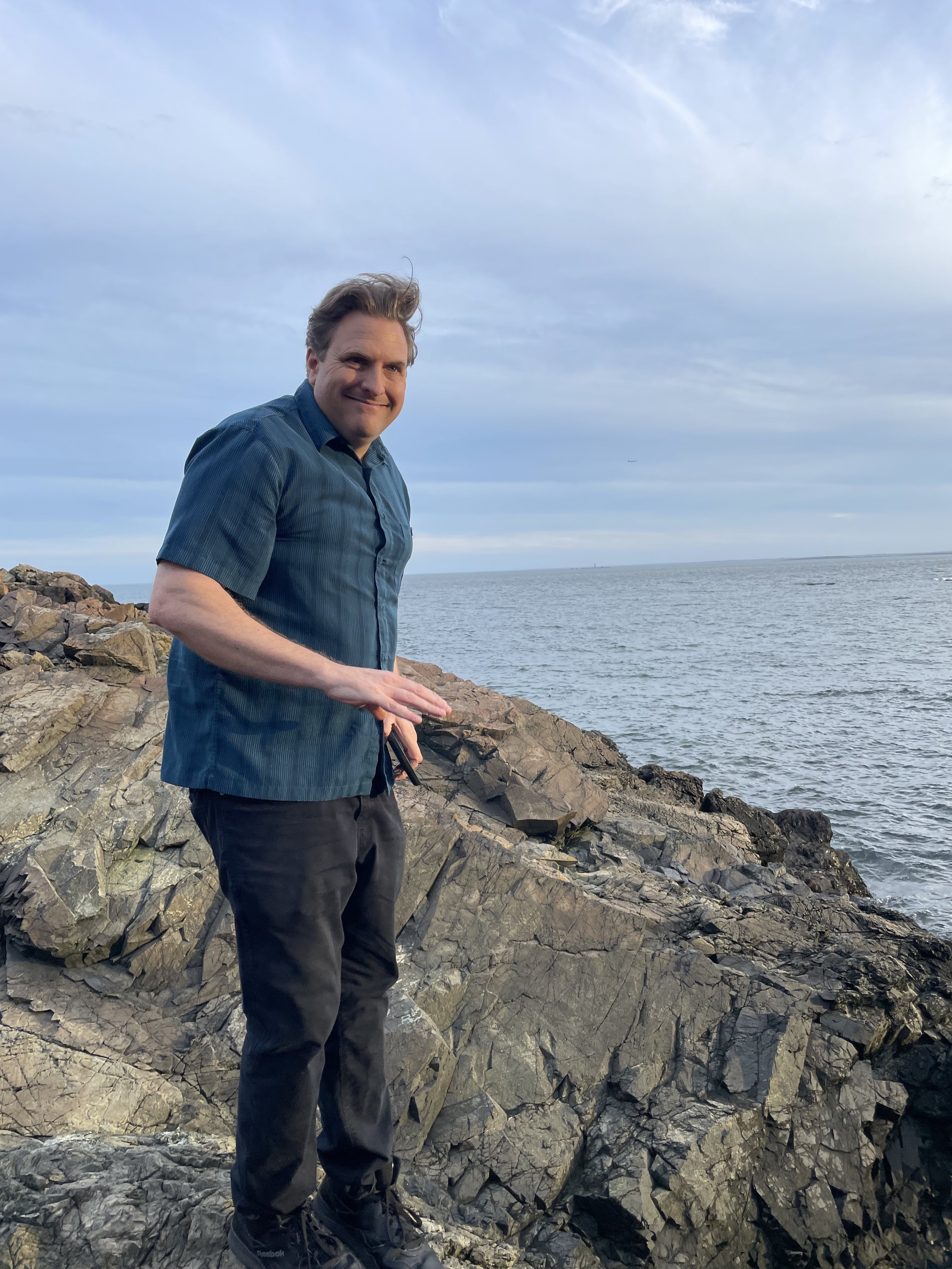Bioinspired Ceramics
Pholadidae Bivalve Ceramic Tooling Techniques to promote intertidal biodiversity
Climate change, sea level rise, and the construction of marine defense structures in the intertidal zone act as a “coastal squeeze” on the available habitat for intertidal species, directly impacting biodiversity.
Topographical complexity provides microhabitats and increases biodiversity by the natural colonization of vacated borings from the rock boring clam (Family: “Pholadidae”). By providing optimal protection from evaporation and protection from predators, intertidal species that utilize these bore holes have the potential to thrive.
Several designs were tested in ceramics to artificially manufacture a boring clam hole and provide increased topographical complexity in intertidal zones. Prototypes were produced using ceramic slip casting methods in a variety of substrates and a scalable stamp method with an ABB articulated robot in a ceramic slab to generate bore filled topographic tiles that can be installed on intertidal surfaces.
This project was developed in collaboration with Ethica Burt, Gerardo Corona, and Cedric Pascal-Somer.
product design | digital modeling | digital + physical fabrication
Process + Prototypes
We prototyped three tools to replicate the clam’s bore holes ranging from craft-based to scalable commercial methods:
Slipcasting: Creation of multiple plaster molds to speed up efficiency of production. Over 350 dried casts of the bore shapes at different scales were bisqued and then set in various substrates to create tiles including clay, resin, and concrete
Craft-based stamping: created several stamp shapes for hand production
Robotics based stamping: Using digitally printed tools to try and replicate the holes of the boring clam through stamping
We conducted a site visit to the tidal pools in Nahant, Massachusetts to get hands-on experience with tide pools, guided by SME Oceanographer James Weaver.



